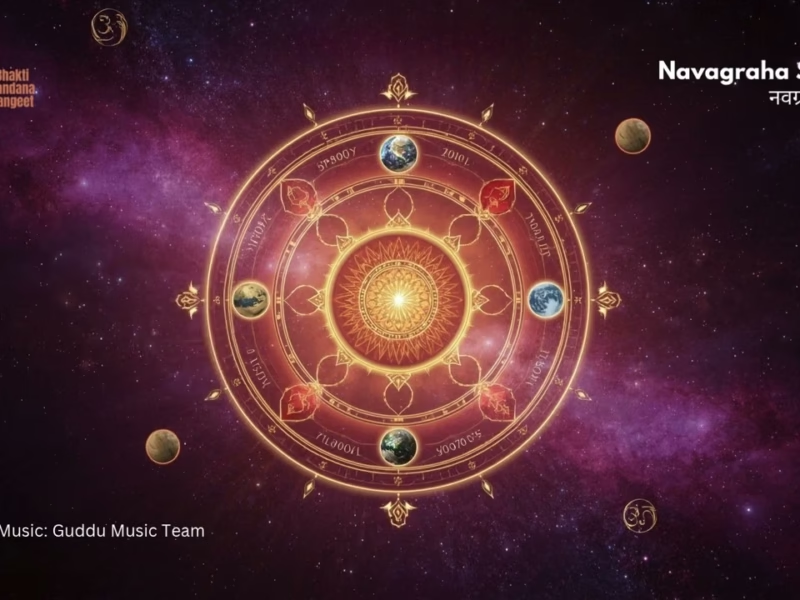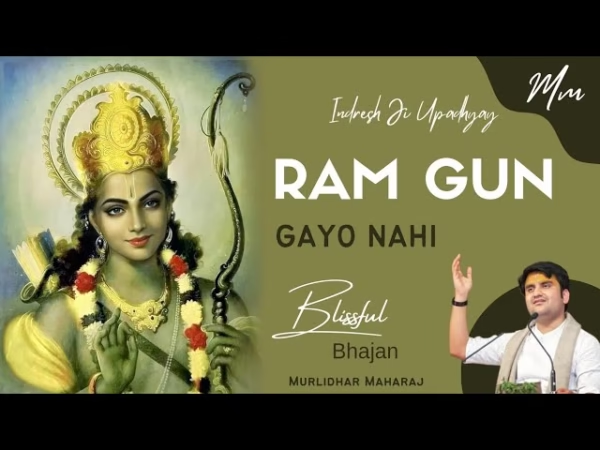Contents
The Ram Van Gaman Path is not just a route; it is a profound journey steeped in cultural heritage and spiritual significance. This path traces the footsteps of Lord Rama, Sita, and Lakshmana during their years of exile, or ‘vanvaas,’ as narrated in the epic Ramayana.
The Ramayana, one of the oldest and most important texts in Hindu literature, recounts the life and trials of Lord Rama, providing moral lessons that resonate with millions.
Ram Van Gaman Path
From the sacred city of Ayodhya and extending towards various locations across India, this path is revered in Hinduism and represents a rich tapestry of history, spirituality, and community.
A total of 248 places have been identified within the nations of India and Sri Lanka that lie on the course of the Ram Van Gaman Path.
Key Locations
Uttar Pradesh

Ayodhya is the starting point of the Ram Van Gaman Path and is considered the birthplace of Lord Rama.
Nandigram: Nandigram is located near Ayodhya and is believed to be the place where Lord Rama’s brother, Bharata, ruled during Rama’s exile.
Sultanpur is associated with the Ramayana narrative, which is believed to be the story that Lord Rama passed through during his exile. This historical connection enhances its significance as a pilgrimage site.
Pratapgrah: It is part of the broader narrative of Lord Rama’s journey during his vanvaas (exile)
Prayagraj: This path traces the journey of Lord Rama, Sita, and Lakshmana during their exile, and Prayagraj serves as an important stop along this route.
Chitrakoot (MP)
Chhattisgarh

- Sitamarhi Harchowka (Koriya)
- Ramgarh (Surguja)
- Shivrinarayan (Janjgir-Champa)
- Turturia (Balodabazar)
- Chandkhuri (Raipur)
- Rajim (Gariaband)
- Sihava Saptarishi Ashram (Dhamtari)
- Jagdalpur (Bastar)
- Ramaram (Sukma).
Madhya Pradesh
- Chitrakoot: It is said that Lord Rama, Sita, and Lakshmana spent a considerable amount of time in Chitrakoot during their exile.
- Amarkantak (Shahdol)
- Satna
Maharashtra
Ramtek: Ramtek is another significant location along the Ram Van Gaman Path. This town is known for the historic Ramtek Fort, which is believed to have been built during the time of Lord Rama. The Ram Mandir located within the fort complex is dedicated to Lord Rama and attracts many devotees. The scenic beauty of Ramtek, combined with its historical significance, makes it an essential stop for pilgrims.
Nasik: Nashik is one of the prominent locations in Maharashtra linked to the Ram Van Gaman Path. This city is famous for its religious significance and is known as the site where Lord Rama is believed to have spent time during his exile. The sacred Ram Kund in Nashik is a major pilgrimage site, where devotees perform rituals and take holy dips.
Panchavati: Located near Nashik, Panchavati is another vital site associated with the Ramayana. It is believed to be where Lord Rama, Sita, and Lakshmana lived during their exile. The area is home to several temples, including the Kalaram Temple, dedicated to Lord Rama. Panchavati is a popular destination for pilgrims seeking to connect with the divine narrative of the Ramayana.
Tuljapur: Tuljapur is famous for the Tulja Bhavani Temple, dedicated to Goddess Bhavani, who is believed to have been worshipped by Lord Rama during his exile. The temple is a significant pilgrimage site in Maharashtra and is associated with various legends from the Ramayana. The spiritual ambiance of Tuljapur enhances its importance along the Ram Van Gaman Path.
Naldurg: Naldurg is known for its historic fort and temples, which are linked to the Ramayana narrative. The fort is believed to have been a significant location during Lord Rama’s journey. Naldurg’s rich history and cultural heritage make it a noteworthy site along the Ram Van Gaman Path, attracting both pilgrims and history enthusiasts.
Karnataka
Hampi: Hampi, a UNESCO World Heritage site, is known for its ancient temples and ruins. While primarily associated with the Vijayanagara Empire, Hampi has connections to the Ramayana. The region is believed to have been visited by Lord Rama during his exile, making it an important location for pilgrims.
Telangana
Bhadrachalam: Bhadrachalam is one of the most significant locations in Telangana associated with the Ram Van Gaman Path. It is famous for the Bhadrachalam Temple, dedicated to Lord Rama. According to tradition, Lord Rama visited this region during his exile. The temple, situated on the banks of the Godavari River, attracts thousands of devotees, especially during festivals like Ram Navami. The rich cultural heritage and spiritual ambiance of Bhadrachalam make it a vital stop for pilgrims retracing Lord Rama’s journey.
Tamilnadu
Rameshwaram: Rameswaram is one of the most significant locations in Tamil Nadu associated with the Ram Van Gaman Path. It is believed to be the place where Lord Rama built a bridge, known as Rama Setu or Adam’s Bridge, to reach Sri Lanka to rescue Sita from Ravana. The Ramanathaswamy Temple in Rameswaram is dedicated to Lord Shiva and is a major pilgrimage site for devotees. The temple’s architecture and spiritual significance make it a vital stop for pilgrims retracing Lord Rama’s journey.

Dhanushkodi: Dhanushkodi is a significant location in the context of the Ram Van Gaman Path and holds immense historical and mythological importance, particularly related to the epic Ramayana. Situated at the southeastern tip of Pamban Island in Tamil Nadu, Dhanushkodi is known as the site where Lord Rama is believed to have constructed the Ram Setu (or Adam’s Bridge) to reach Lanka and rescue Sita from Ravana.
Ram Setu: The Ram Setu is a chain of limestone shoals that connects Dhanushkodi to Mannar Island in Sri Lanka. It is believed to have been constructed by Lord Rama and his army of monkeys, led by Hanuman, using floating stones. The construction of the bridge is described in the Valmiki Ramayana, which details how Lord Rama and his allies built the bridge to cross over to Lanka for the rescue of Sita.
Sri Lanka
Sri Lanka holds significant cultural and mythological importance in relation to the Ram Van Gaman Path and the epic Ramayana. The island is closely associated with the legendary events surrounding Lord Rama’s quest to rescue Sita from Ravana, the demon king of Lanka.
Ram Setu
Tourism and Pilgrimage Opportunities
This path not only holds immense religious significance but also presents numerous tourism and pilgrimage opportunities across various states in India. Here’s an overview of the tourism and pilgrimage initiatives related to the Ram Van Gaman Path.
The Ram Van Gaman Path offers a unique blend of tourism and pilgrimage opportunities, allowing devotees and tourists to connect with the rich cultural and spiritual heritage associated with Lord Rama. Through the development of key sites, cultural events, and infrastructure improvements, this initiative aims to create a vibrant pilgrimage circuit that honors the legacy of the Ramayana while promoting tourism and community involvement.
Travel Tips for Pilgrims and Tourists
Traveling along the Ram Van Gaman Path offers a unique opportunity to connect with the rich spiritual and cultural heritage of India. By following these travel tips, pilgrims and tourists can enhance their experience, ensuring a meaningful and memorable journey. Whether you are seeking spiritual growth or simply exploring the historical significance of the sites, preparation and respect for local customs will enrich your pilgrimage.
Research Key Locations: Familiarize yourself with the significant sites along the Ram Van Gaman Path, such as Ayodhya, Chitrakoot, and Rameswaram. Knowing what to expect can enhance your experience.
Set Realistic Expectations: Understand the distances between locations and the time required for travel to avoid rushing through your pilgrimage.
Cultural Sensitivity: Be aware of and respect local customs. For example, dress modestly when visiting temples, and follow specific practices such as removing shoes or covering your head where required.
Learn About the Sites: Familiarize yourself with the history and significance of the places you visit. Understanding the legends and stories associated with each site can deepen your spiritual experience.
FAQs
The Ram Van Gaman Path is a pilgrimage route that follows the journey of Lord Rama as described in the Ramayana, connecting various sacred sites.
Key locations include significant temples, historical landmarks, and natural sites that are part of Lord Rama’s journey.
Yes, various local guides and tour operators offer guided experiences along the path, enhancing the cultural and historical understanding of the sites.











